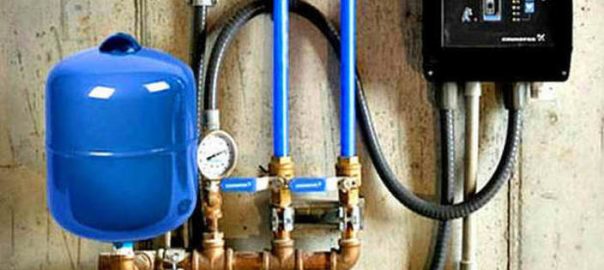Your well pump has one job – to draw groundwater from below the earth into your home. While it’s just one job, it’s an important one, so choosing the right equipment is essential. There are two main categories of pump – submersible well pump and an above ground, or jet pump. If you’re looking at having a well drilled or need a new pump installed, we’re comparing the two types to help you make the right choice.
What Is a Submersible Well Pump
Like it’s name suggests, a submersible well pump is installed inside your home’s water well, submerged under the water line. Designed for deep wells that run 75 feet deep or more, their depth allows them to push water up into a pipe that delivers the water to your storage tank.
Advantages of a Submersible Pump
The number one benefit to this kind of well pump is its efficiency. Because the pump is already in the water, it’s able to push the water up which uses energy more effectively. This offers several benefits including:
Durability – They don’t have to work as hard to move water into the home.
Speed – There’s already water in the pump, so there’s no need to prime it to get water into the house, saving time.
Pressure – A submersible pump provides stronger, more consistent water pressure.
Additionally, submersible pumps are generally convenient because they are portable and can be moved as needed, don’t take up any property space outside the well, and run more quietly than jet pumps.
Disadvantages of a Submersible Pump
Submersibles need to go directly into the well, so they are a bit more complicated to install, and should only be put in by experienced well pump technicians. Also, while it’s unlikely that they will overheat because of the continuous flow of water around the pump, heat can accumulate within the compartment which can lead to a risk of overheating.
The biggest drawback to a submersible pump is the cost of purchase and well pump maintenance is greater than a standard pump.
What Is an Above Ground Well Pump?
The above ground pump, or jet pump, is installed above the well, either in the home or in a separately built “well house,” and is equipped with a suction pipe that uses an impeller to create a vacuum and pull water up through a nozzle. Jet pumps are large and powerful because the energy needed to pull water up is greater than the energy needed to push the way a submersible pump does. This option is generally best for homes with shallow wells or wells that run less than 75 feet deep.
Advantages of a Jet Pump
The above ground well pump offers homeowners several benefits, including:
Steady water flow – Because it can move water across a long distance, this is good for when the well is farther from the house.
Requires minimal maintenance
Inexpensive
Disadvantages of an Above Ground Well Pump
The biggest issue most homeowners have with the jet pump is that it needs to be primed to function. This means that water has to be drawn up into the well, then sent into the house – you can’t just turn it on and get water near instantly. Also, its efficiency is minimized the deeper the well is, and sand, debris, and plant matter can damage the inner workings of the motors. One other thing to consider is that the noise from the pump may be distracting or annoying if it’s near your home.






